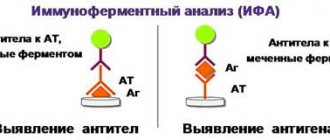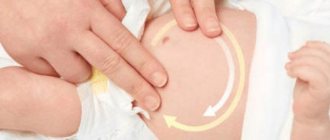If a baby of the first year of life burps up a small amount of formula or milk after feeding, as a rule, there is no reason for concern - at this age this phenomenon is regarded as a physiological norm. However, excessive and frequent regurgitation may be a sign of a disorder in the nervous system. Such cases require seeking advice from specialists. Our neurologist will help you figure out when regurgitation is considered an age-related feature, and in what situations the baby’s condition requires therapy.
When is regurgitation considered normal?
Regurgitation is the reflux of gastric contents into the esophagus and oral cavity, which occurs spontaneously after feeding. Doctors say: about 80% of babies are prone to regurgitation. For most, this phenomenon stops by two to three months; extremely rarely it can last up to four to five months. Before this period, two types of regurgitation are considered normal:
- If after feeding the baby burps no more than two teaspoons of formula or milk.
- When during the day there is one regurgitation of stomach contents with a volume of more than three teaspoons.
By the eighth month, physiological (so-called “benign”) regurgitation should completely stop.
Regurgitation is associated with the anatomical features of the structure of the digestive tract in children under 1 year of age. It occurs when air is swallowed into the stomach or when intra-abdominal pressure increases. This may be due to the following factors:
- improper attachment of the baby to the breast;
- lack of feeding regimen, overfeeding;
- active sucking during feeding, while swallowing air;
- incorrect selection of feeding bottles and formula for artificial feeding;
- tight swaddling;
- a sharp change in the baby’s body position immediately after finishing feeding;
- increased gas formation in the intestines.
How can parents of a baby determine the “benign quality” of regurgitation? Physiological regurgitation is characterized by the following factors:
- baby's age up to 1 year;
- regurgitation occurs 2 or more times a day for three or more weeks;
- regurgitation occurs spontaneously, without any specific precursors;
- during regurgitation there is no tension in the muscles of the anterior abdominal wall;
- the baby does not experience difficulty swallowing and feeding, and does not take a forced position;
- regurgitation is not accompanied by increased sweating and pallor of the baby, or a deterioration in his general condition;
- the child is active, has a good appetite, and is gaining weight according to his age.
Physiological regurgitation is also supported by the child’s lack of symptoms of diseases of the central nervous system and digestive organs, and metabolic disorders.
Feeding rules
Frequent regurgitation can be prevented by following a few feeding rules.
- After feeding, it is necessary to hold the baby upright. Even if your baby is tired or wants to sleep, you shouldn’t put him to bed right away. It is very comfortable to hold infants on your shoulder. After waiting for the air to burp, the child can be given any position.
- The same should be done before feeding. The thing is that in an upright position the child can release excess air from the stomach. If this is not done before eating, belching is guaranteed.
- There is a certain position recommended for breastfeeding. One of the main goals of correct positioning of a nursing mother and baby is to prevent regurgitation. The semi-vertical position of the baby with the head raised above the level of the body must be maintained during each feeding.
- Feedings should be frequent, but in small portions. Overfeeding is fraught not only with regurgitation, but also with other digestive problems.
- It is important not to feed your baby when he is crying or laughing, otherwise he will swallow excess air.
- If feeding is carried out using a bottle with a nipple, it is necessary to ensure that the hole in the nipple is not too large, and the position of the bottle is such that the nipple is always filled with mixture and not with air.
- You should refrain from active games in the first half hour after feeding.
Following these simple rules will help reduce the frequency of regurgitation.
How is the intensity of regurgitation determined?
A special five-point scale is used for assessment, where:
- 1 point - up to 5 regurgitations per day in a volume of up to 3 ml;
- 2 points - more than 5 regurgitations per day in a volume of over 3 ml;
- 3 points - the baby burps more than 5 times during the day up to 1/2 the volume of milk or formula (up to half of the feedings);
- 4 points - each feeding is accompanied by regurgitation of a small amount of formula or milk for half an hour or more;
- 5 points - at least half of the feedings end with regurgitation of from 1/2 to the entire volume of milk or formula.
Treatment
Treatment is required if respiratory complications occur or if irritation of the esophageal mucosa is suspected. In this case, the specialist will prescribe medications that reduce the acidity of gastric contents. This will not help with regurgitation, but will prevent further trauma to the esophagus. Specific medications are selected individually at an appointment with a pediatrician.
If the cause of regurgitation is an anatomical defect, surgical treatment may be required. Indications for surgery and its scope are specified by the surgeon.
For advice on infant feeding, please contact the specialists at the CELT clinic. Extensive experience, highly qualified clinic doctors and modern equipment are the key to the health and successful development of your children.
Make an appointment through the application or by calling +7 +7 We work every day:
- Monday—Friday: 8.00—20.00
- Saturday: 8.00–18.00
- Sunday is a day off
The nearest metro and MCC stations to the clinic:
- Highway of Enthusiasts or Perovo
- Partisan
- Enthusiast Highway
Driving directions
What symptoms should parents be wary of?
Regurgitation may be a sign of a disease, and in this case, you cannot do without the help of a doctor. The child must be shown to a pediatric neurologist if he:
- regurgitates profusely (“gushing”), the intensity of regurgitation is 3 or more points;
- when regurgitating, he becomes capricious and cries;
- after regurgitation, he demands to be fed again, as he remains hungry;
- does not gain enough weight, sleeps poorly;
- has symptoms of respiratory diseases, suffered from pneumonia (especially in the first 6 months of life).
The presence of serious pathologies may be indicated by:
- a sharp decrease in body weight;
- decreased frequency of urination (less than 8-10 times during the day);
- profuse vomiting of the stomach with an admixture of bile;
- lack of stool.
Regurgitation may indicate some problems in the body if they do not stop in a one-year-old baby.
Child behavior
The mechanism of regurgitation is such that components of gastric juice enter the esophagus along with the food eaten. As you know, it has high acidity and irritates the esophageal mucosa. As a result, the child experiences discomfort and can become quite restless. It’s very easy to check whether your baby’s anxiety is related to regurgitation - just lay him on his back. If the problem is regurgitation, then the baby will behave even more restlessly. If not, then the horizontal position will not bring him discomfort.
If regurgitation occurs frequently, it is called regurgitation syndrome. It can lead to complications - chronic irritation of the respiratory tract. As a result of the constant aggressive effect of gastric juice on the mucous membranes of the upper respiratory tract, the latter are susceptible to an inflammatory process. Therefore, it is important to monitor the child’s condition and, if necessary, consult a doctor.
Causes and manifestations of pathological regurgitation
Frequent and profuse regurgitation may occur due to:
- congenital anomalies and surgical pathologies of the digestive tract (pyloric stenosis, gastroesophageal reflux);
- diaphragmatic hernias;
- birth injuries complicated by brain damage;
- injuries of the cervical spine;
- neuroinfections;
- increased intracranial pressure;
- hereditary metabolic disorders;
- lactase deficiency.
Pathological regurgitation is characterized by intensity and systematicity, the reflux of a large volume of formula or milk into the oral cavity from the stomach. There is a decrease in body weight gain or its absence. Persistent vomiting is complicated by dehydration of the body, which is manifested by weakness, capriciousness, and apathy of the child.
As a result of the reflux of contents from the stomach into the respiratory tract, the baby develops aspiration pneumonia, which is characterized by general weakness, sweating, cough, and increased body temperature.
Belching - the mechanism of the process
Belching in a baby activates the process of digesting food.
Belching is a physiological process in which excess air is expelled from the stomach through the oral cavity. This requires a reflex contraction of the gastric muscles and an open cardiac sphincter. A person becomes familiar with this phenomenon in infancy.
During feeding, the baby swallows some air. It needs to be removed from their little tummy. But a small amount of air is necessary for the normal functioning of the gastrointestinal tract. This helps regulate internal pressure in the body. Additional functions of burping:
- Improving gastric motility
- Activates the process of food digestion
- Reduced pressure in the stomach
- A safe mechanism that prevents stretching of the walls of the stomach and intestines
During normal functioning of the gastrointestinal tract, the process of removing air goes unnoticed. But in pathological processes, additional symptoms are added to belching. In this case, additional examination and treatment of the underlying disease is required.
Belching in toddlers, general recommendations
The introduction of complementary foods should only be done on the recommendation of a pediatrician.
If belching does not cause concern in the baby, then just be patient. In newborns, the nervous system is not yet fully developed. Therefore, the likelihood of food moving back through the esophagus is high. As you grow, the frequency of regurgitation decreases. Options to solve the problem:
- Normalization of feeding. Some mothers think that the little one is malnourished. Especially if the baby is restless or requires increased attention. The baby will regurgitate excess milk - this is a physiological mechanism of protection against overeating. If the toddler is gaining weight according to age norms, then you should not increase his diet.
- Clothing – tight swaddling is now a thing of the past. Choose loose, comfortable clothes that do not put pressure on your tummy.
- Complementary foods are introduced according to the pediatrician's recommendations. Introduce any new dish gradually, starting with small quantities. Carefully observe your baby's behavior after introducing him to new food. If any alarming symptoms appear, then you will have to wait a while with this dish. This does not mean giving up completely. Just set it aside and try again after a while.
- Smoking is a bad habit. You should generally forget about cigarettes in the room where the baby is. In addition to problems with belching, the toddler runs the risk of problems with the respiratory system and other vital systems.
Poisoning in a baby and vomiting in response to complementary foods
Often parents strive to introduce new foods into their baby’s diet as quickly as possible. The age at which a baby is ready to eat new food is different for everyone, the inscriptions on jars of puree and grandmother’s advice are not the main criterion for the need to introduce adult foods. When introducing new foods to your baby, you should carefully monitor his reaction. If vomiting occurs immediately after eating or after some time, you should postpone the time of complementary feeding and continue to feed the baby with breast milk or formula.
A child who is already actively consuming pureed foods from various foods may also be susceptible to vomiting. It can be caused by poor quality nutrition or violation of storage conditions. It should be noted that small deviations from the ideal quality of products are enough for a child to cause poisoning. It is determined by the following symptoms:
- Vomit
- Diarrhea
- Sharp pain in the abdomen
- Temperature increase
- Weakness and increased sweating
If you experience frequent vomiting, diarrhea and fever, you should call a doctor to decide on hospitalization; there is a risk of dehydration, which is very dangerous for the baby.
Pathologies in the development of the gastrointestinal tract
If an infant vomits like a fountain, it is most likely caused by problems with the gastrointestinal tract. In this case, they begin to appear closer to the second month of the baby’s life. These problems consist of regular vomiting about a couple of hours after feeding the baby. The amount of liquid released is usually greater than the amount eaten. Some of the milk is curdled and digested, this is explained by the retention of food in the stomach and its untimely entry into the baby’s intestines.
The consequences of congenital pathologies may be a lack of weight gain or weight loss, which requires careful monitoring by specialists and hospitalization if necessary.











